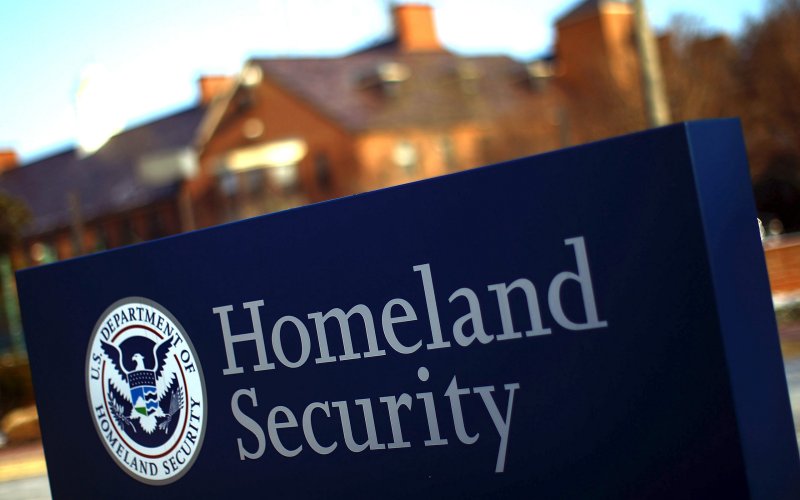
U.S. officials at the southern border will begin sending some asylum applicants back to Mexico on Friday as the Trump administration implements new measures prohibiting migrants from waiting in the United States while their cases are processed.
The plan, announced by the Department of Homeland Security on Thursday night, follows high-level talks between the two governments late last year as U.S. border officials struggled to handle a surge of Central Americans fleeing violence and poverty. It will be introduced in California, at the San Ysidro port of entry south of San Diego, and eventually expanded throughout the nearly 2,000-mile border, a DHS official said earlier Thursday, speaking on the condition of anonymity because the plan had not yet been finalized.
According to a fact sheet distributed by DHS, “Certain aliens attempting to enter the U.S. illegally or without documentation, including those who claim asylum, will no longer be released into the country, where they often fail to file an asylum application or disappear before an immigration judge can determine the merits of any claim to prevent removal.”
In a statement, Homeland Security Secretary Kirstjen Nielsen called the new measure “unprecedented” and aimed at addressing “the ongoing humanitarian and security crisis at our Southern border.”
“For far too long,” Nielsen said, “our immigration system has been exploited by smugglers, traffickers, and those who have no legal right to remain in the United States.”
The plan had been informally called Remain in Mexico and followed delicate negotiations with the administration of Mexico’s new leftist President Andrés Manuel López Obrador, who took office Dec. 1. On Thursday, officials referred to the initiative as the Migrant Protection Protocols, saying both countries are simply implementing their own laws. Homeland Security officials have described the plan as one of the most significant changes to immigration policy in decades.
Immigrant rights groups have opposed it, saying it violates U.S. and international asylum laws and could potentially face court challenges. “The president thinks he can do this unilaterally,” said Kevin Appleby, a senior director at the Center for Migration Studies. “But it’s a blatant rejection of current law.”
White House officials did not respond to requests for comment Thursday.
Tonatiuh Guillén, who heads Mexico’s immigration agency, said he had not received any communication from the United States about when implementation of the measures would begin.
“Part of the difficulty is that we have very few explicit definitions, and a very noisy environment, with many rumors, and we have not managed to refine what [the plan] entails,” he said Thursday afternoon.
Guillén said he was concerned about the measures and Mexico’s ability to accommodate migrants who could spend months or years in the country as their asylum claims are processed. His first concern, he said, was about the humanitarian situation.
“We don’t have the capacity” to absorb many migrants beyond their initial reception, he said. “It is a challenge of living conditions, of public services,” he added, saying that it was unclear to Mexico’s immigration agency whether the U.S. government planned to keep only a fraction of its asylum seekers in Mexico, or the many thousands who apply each year.
“If it is a very small scale, it would not be significant,” Guillén said. “If it is a higher-level scale, we would be in some difficulty, which would force a change in the way Mexico conducts its reception” of migrants.
DHS said late Thursday that the United States had notified Mexico “that it is implementing these procedures under U.S. law,” and an official said they intend to start gradually. In its statement, Homeland Security contends that the Immigration and Nationality Act authorizes them to carry out the action.
Starting Friday, migrants who arrive at San Ysidro will be told they must go back across the border – even if they are not Mexican citizens – while U.S. immigration officials assess their claims, DHS officials said. They will receive a notice to appear in court and a toll-free number to call for status updates.
“Aliens who need to return to the U.S. to attend their immigration court hearings will be allowed to enter the U.S. and attend that hearing,” the DHS fact sheet says. “Aliens whose claims are found meritorious by an immigration judge will be allowed to remain in the U.S. Those determined to be without valid claims will be removed from the U.S. to their country of nationality or citizenship.”
The new approach represents a significant departure from long-standing asylum-screening procedures and comes as the administration struggles to handle a record surge of Central American families coming to the southern border. In fiscal 2018, 107,000 migrant family members were taken into custody by U.S. border security officials, surpassing a record set in 2016.
Trump administration officials have acknowledged that the president’s proposed border wall would have little effect stemming the flow of migrant families seeking asylum as they often surrender to authorities, in accordance with the law, once they arrive on U.S. soil.
Currently, migrants requesting asylum can avoid immediate deportation by establishing that their lives would be endangered if they were returned to their home countries. Immigration courts are backlogged with hundreds of thousands of asylum cases, so migrants are released into the United States to await their hearings – a process that can take more than a year. President Donald Trump and other immigration hard-liners detest this system, calling it “catch and release.”
Under the new measures, if asylum seekers do not fear persecution in Mexico, then they must stay there while their cases are processed. To implement the new procedures, U.S. Citizenship and Immigration Services was expected to dispatch additional asylum officers to San Diego from the agency’s field offices in California and Washington, District of Columbia.
San Ysidro continues to be a destination for migrants traveling as part of large caravan groups that originate in Central America, a trend that has become exceedingly frustrating for Trump. The port has experienced disruptions in recent months as migrants forced to wait in Tijuana have grown impatient and rushed the border.
The new initiative is one of several hard-line measures the administration has sought to implement at the border, including the deployment of several thousand military personnel and the separation of thousands of migrant children from their families – a policy Trump eventually reversed after widespread condemnation. The administration’s attempt to ban Central Americans from seeking asylum was blocked in federal courts last fall.
Over the weekend, Trump offered Democrats a deal to end the partial government shutdown that included a provision to force Central American minors to remain in their own countries while seeking asylum in the United States. That a plan was fiercely opposed by Democrats and immigrant rights groups. A Republican bill including that provision was soundly defeated in a Senate vote Thursday.
(c) 2019, The Washington Post · Andrew deGrandpre, Maria Sacchetti, Kevin Sieff, David Nakamura
{Matzav.com}












“Trump administration officials have acknowledged that the president’s proposed border wall would have little effect stemming the flow of migrant families seeking asylum as they often surrender to authorities, in accordance with the law, once they arrive on U.S. soil.”
source please?